The Floral Trend To Know About
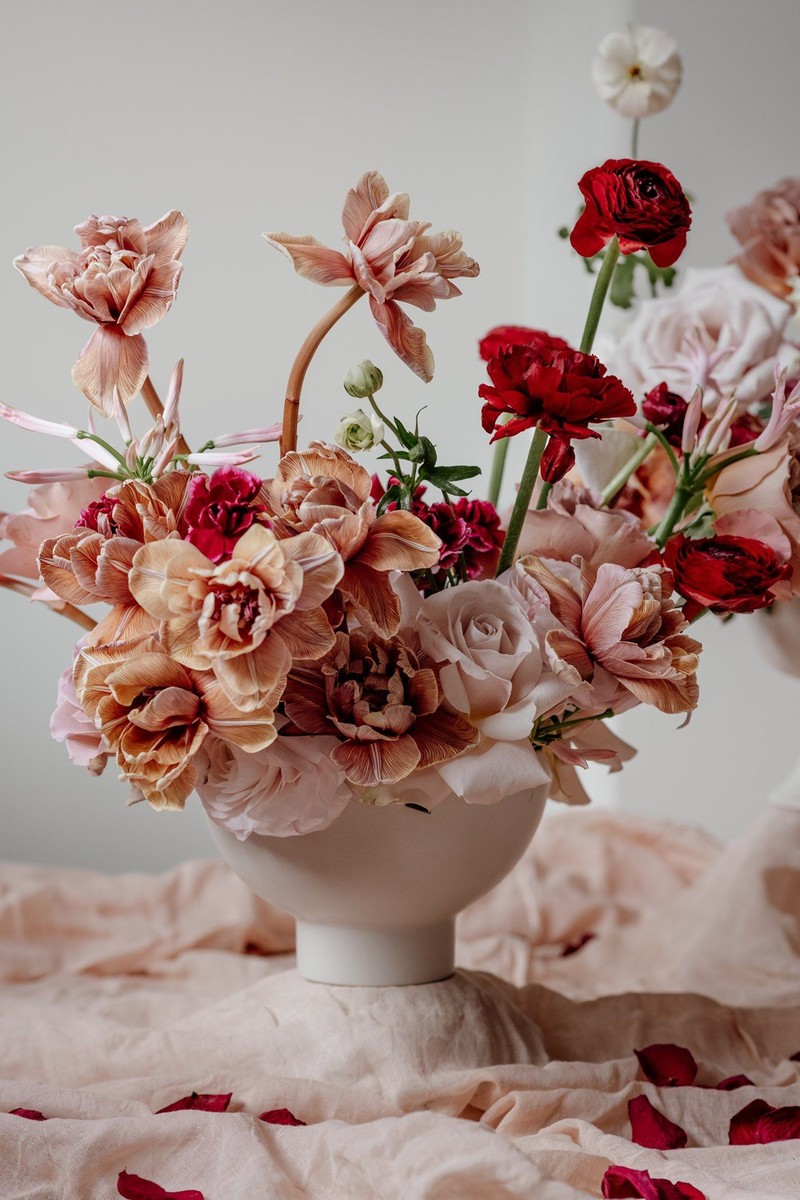
How would you describe this look?
“Contemporary and elegant, low floristry is all about showing off nature at its best. The aim is to make the arrangement look like something that could occur spontaneously. The design of our vessels also supports this abundant, loose and informal style perfectly.” – Jess Finch, co-founder, GAIA Vessels
Does it work for all seasons?
“There’s a saying in floristry that ‘what grows together, goes together’ so if you’re working seasonally, you’ll always be able to find flowers and foliage that you can combine to make a beautiful arrangement. Of course, the flowers we think of as the familiar favourites are more readily available in the spring and summer, but if you’re prepared to be creative and forage a little, there’s plenty of variety in the colder months, too.” – Jess
Where would you position these arrangements?
“They are perfect designs for your kitchen or dining table, whether long or round, as guests can easily see over them and they don’t take over your table. This is particularly important to help create a welcoming and warm atmosphere when entertaining at home.” – Philippa Craddock
“If you’re creating something quite big and full, then placing the arrangement somewhere it can stand alone to create more impact is key. On top of a mantelpiece, in the middle of a dining table, or even in the hallway are all good options; just remember the piece will last longer if it’s kept somewhere relatively cool and away from direct sunlight. Flowers are great mood lifters, so you could also consider placing an arrangement like this on your dressing or bedside table.” – Jess
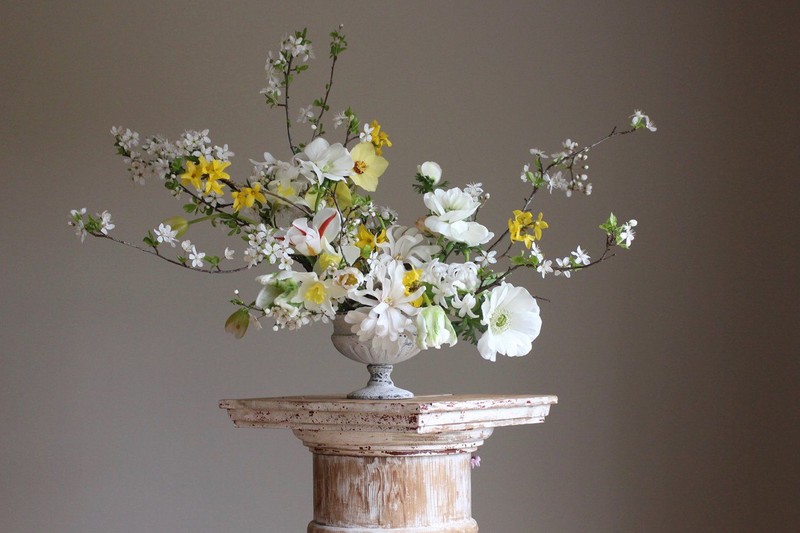
Is it easy to create this look at home?
“Yes, very much so. All you need is a small bowl, then using a kenzan (also called a pin holder and a frog) or chicken wire as your base to hold all the stems, you can add small lengths of greenery first, followed by your flowers – ideally a mixture of larger and smaller head blooms. This combination will give you texture and depth in the design.” – Philippa
Do you need special bowls?
“Choosing the right vessel for your arrangement is really important. First, you need something watertight to avoid leaks and ensure all your stems can get a decent drink. Next, you need something sturdy and weighty that won’t easily tip over or spill when filled with both water and flowers. Finally, you need to consider how deep and wide the vessel is – a vessel with both a decent height and depth is important for getting the proportions of your arrangement right. Our Low Bowl even has a ready-made recess for your flower frog at the bottom. Just pop it in and away you go.” – Jess
Should you use a special base or oasis?
“I don’t use oasis (florist foam) in my work as I don’t believe it’s a sustainable method of floristry. Instead, I use either a kenzan or chicken wire. Both will give you a perfect finish to your design. We have a free step-by-step guide on our website, which you can follow to create a similar design at home.” – Philippa
“There’s no need to use oasis with our products; Gaia vessels were designed with sustainability in mind. Simply cut a small length of chicken wire and mould it into a small ball shape, drop it into your bowl (on top of a flower frog, if you want to use one for additional anchoring) and secure it in place using floristry tape. The chicken wire acts as a grid and support system for your stems, allowing you to build out an arrangement with height, depth and dimension.” – Jess
What about colour schemes – are there any rules?
“If you find yourself leaning towards a particular colour scheme, go with what you like; colour, like everything, is completely subjective. We personally prefer to work tonally as we feel this really helps arrangements look as natural as possible. We also find that referring to the colour wheel can really help when working out which colours will sit well together. The main thing is not to be put off if something doesn’t work; the beauty of flower arranging is that everything can be undone; you can take stems out, add them back in, and play with the piece until it feels right. For us, there’s nothing better than seeing a few single stems turn into a beautiful arrangement.” – Jess
“I love to look at individual flowers as a colour guide. You will find so many different colours just within one flower head. Where you might think of a flower as simply being pink, when you look carefully, you may also spot yellows, and tiny flecks of aubergine; if you are unsure what colours to combine, nature always shows you exactly what works.” – Philippa
HOW TO GET STARTED
Choose a variety of flowers and foliage in order to give your designs real interest and impact. You'll need to consider focal flowers, secondary flowers, filler flowers, foliage and finishing touches – those specific types of flowers that really ‘sing’.
These Are The Flowers And Foliage To Use:
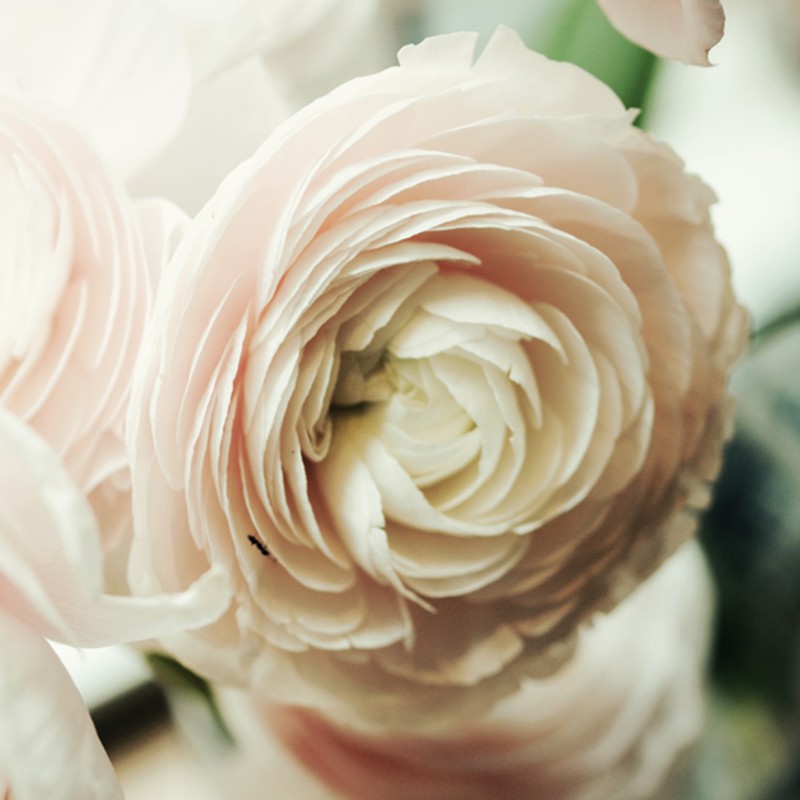
Focal Flowers
Anemone (spring), Ranunculus (spring), Garden Roses (summer), Peonies (summer), Hydrangea (late summer), Dahlia (late summer / autumn), Amaryllis (Winter)
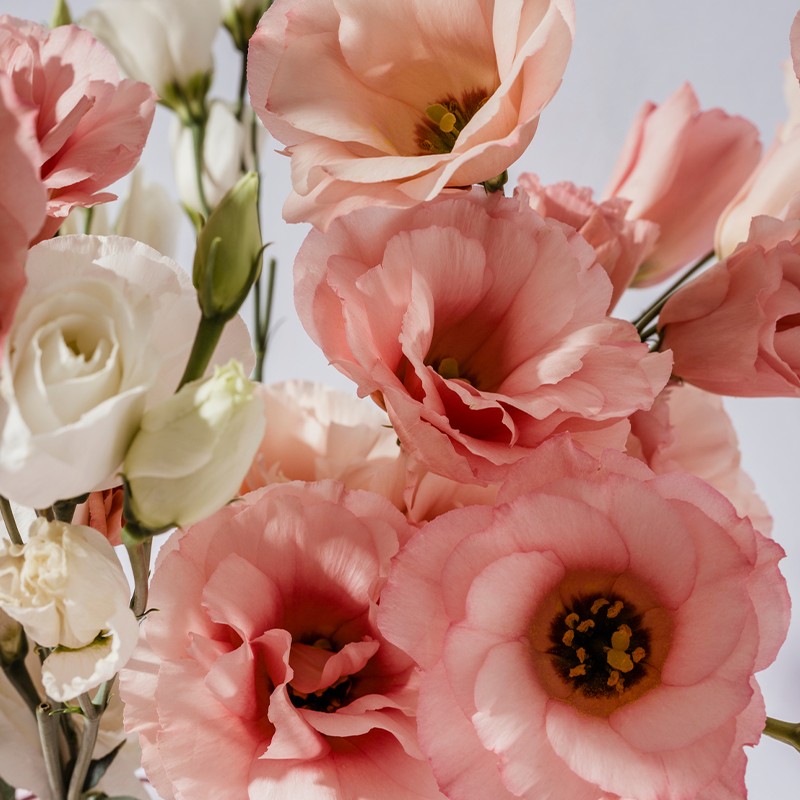
Secondary Flowers
Tulips (spring), Lisianthus (spring/summer), Cosmos (summer), Nerines (autumn), Hellebores (winter)
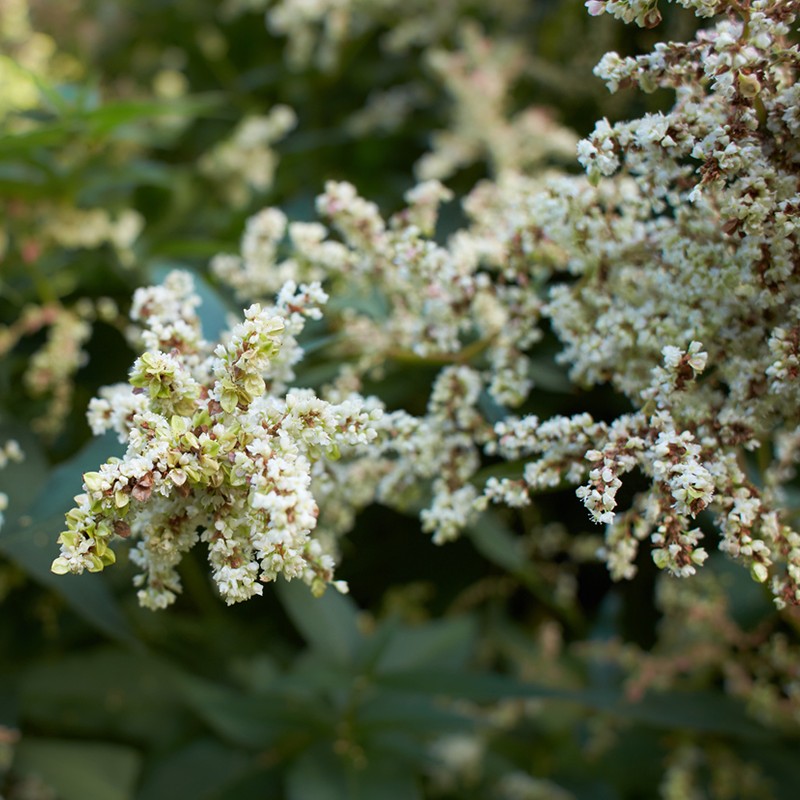
Filler Flowers
Muscari (spring), Achillea (summer), Phlox (summer), Persicaria (autumn), Hypericum (winter)
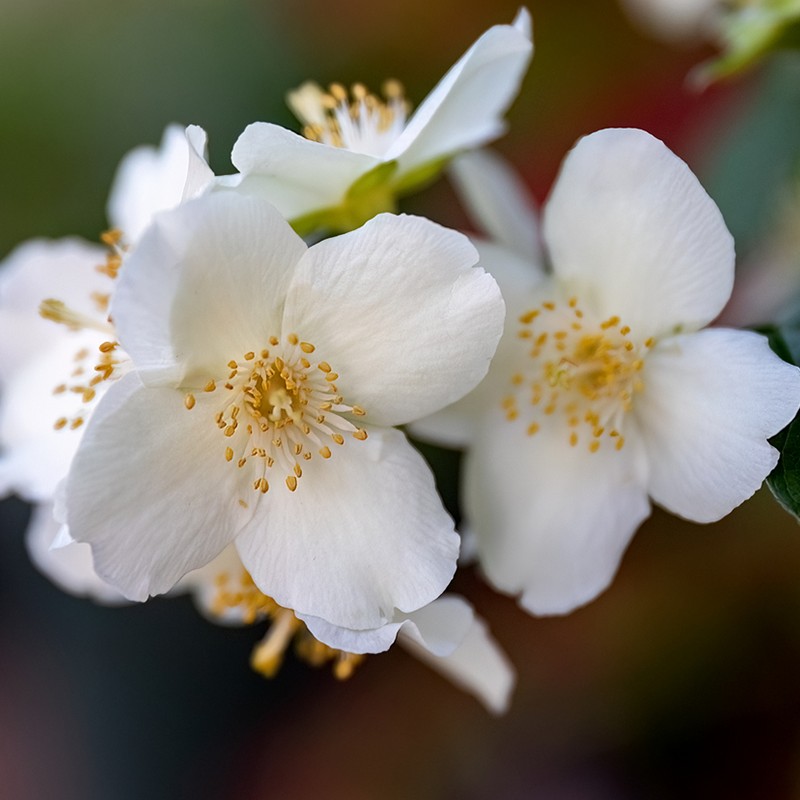
Foliage & Flowering Foliage
Blossom (spring), Mock Orange (late spring), Jasmine (summer), Honeysuckle (summer), Abelia (Autumn), Spindleberry (autumn), Camella (winter), Mimosa (winter)

Finishing Touches
Icelandic poppies (spring), Sweetpeas (spring / summer), Scabious (summer), Grasses & Dried Flowers (autumn)
Now, Follow Jess's Step-By-Step Guide
Start with your focal flowers then build out the design from there. Traditionally, you’ll be taught to begin with your greenery first, but this can lead to foliage-heavy and 'boxy' designs. Instead, choose your focal flowers first – the real heroes of the piece – giving them space to sing and for your other flowers to play strong supporting roles.
Your focal flowers will tend to be the bigger-headed varieties, meaning they usually have relatively thick and strong stems. Depending on the size of your arrangement, you want to choose between five and seven of these; group them together in twos or threes at slightly different angles and depths, but remember to turn the vessel as you arrange to ensure you’re not leaving any gaps or alternatively making the piece look too one-sided. Add a mixture of large focal flowers to give depth to the design, and delicate, longer stems to provide movement and a sense of lightness to your arrangement.
As a rule of thumb, the height of your vessel should make up the bottom third of the total height of the arrangement, and the height of your flowers and foliage should make up the top two thirds. One of the key elements to really beautiful designs is creating depth with your flowers. Cut your stems to different lengths to create a 3D effect; designs with flowers that are of different lengths will avoid your creations looking flat and out of proportion.
When you start designing, it will often look and feel horrible but don’t be put off. This is all part of the process – just keep going.
Visit GaiaVessels.com & PhilippaCraddock.com to sign up to her masterclasses.
DISCLAIMER: We endeavour to always credit the correct original source of every image we use. If you think a credit may be incorrect, please contact us at info@sheerluxe.com.
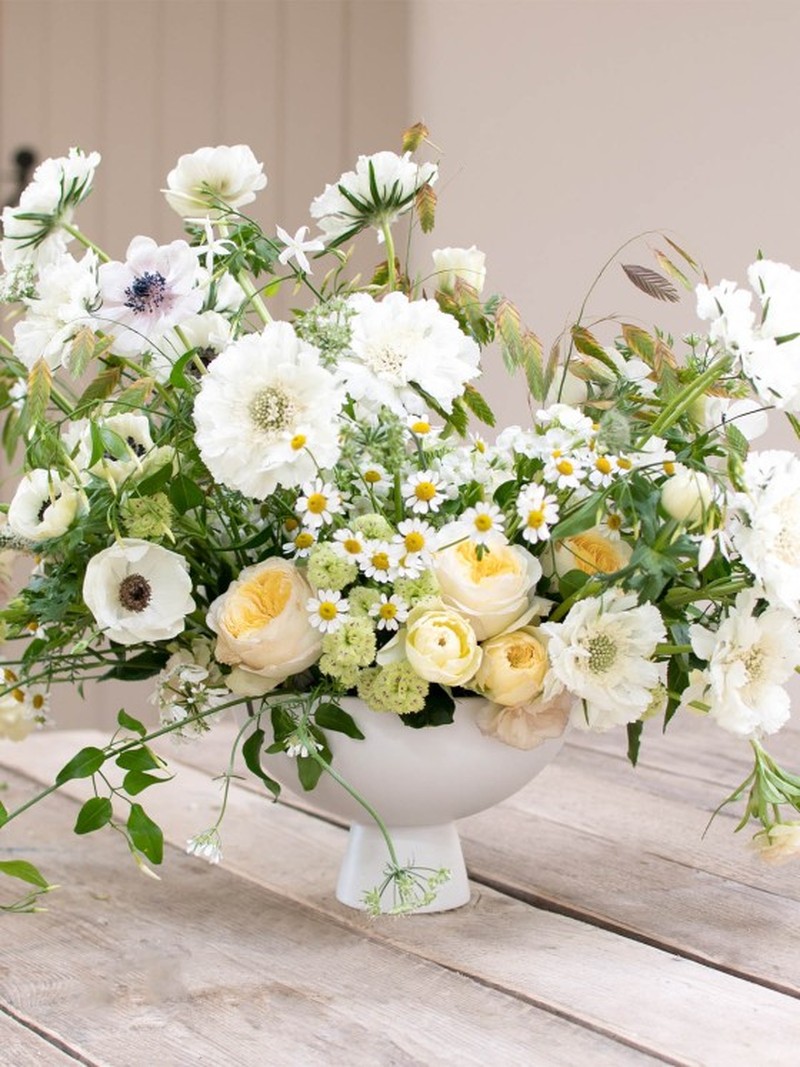
/https%3A%2F%2Fsheerluxe.com%2Fsites%2Fsheerluxe%2Ffiles%2Farticles%2F2023%2F05%2Fsl-low-floristry-3.png?itok=9b-I8UjQ)

